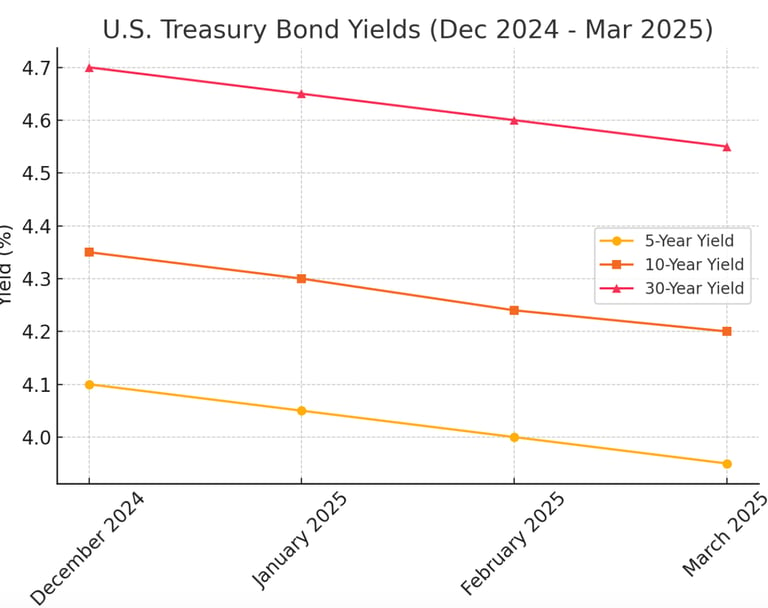How U.S. Tariffs Are Shaping Treasury Bond Yields
FINANCE
Jakub De Vries
3/5/20252 min read


Between January and March, U.S. Treasury bonds experienced a notable increase in volatility, coinciding with the Biden administration's decision to impose higher tariffs—25% on imports from Canada and Mexico and 20% on Chinese goods. This shift in trade policy has contributed to a decline in Treasury yields, raising concerns about potential long-term economic implications. This article will explore the broader impact of these tariff measures, assess their influence on bond markets, and discuss possible strategies the U.S. government could employ to mitigate the decline in yields.


U.S. Department of the Treasury, "Daily Treasury Yield Curve Rates." : https://home.treasury.gov/resource-center/data-chart-center/interest-rates/TextView?type=daily_treasury_yield_curveFederal ; Reserve Economic Data (FRED), "Treasury Yield Curve.": https://fred.stlouisfed.org/dataYahoo Finance, ;"U.S. Treasury Bonds.": https://finance.yahoo.com/bonds
Introduction
The figure above illustrates the decline in bond yields over Q1, with a noticeable downward trend coinciding with Trump's inauguration. This drop has significantly impacted fixed-income investors, leading to lower returns. J.P. Morgan (JPM) has fallen by 7.31%, while Bank of America (BAC) has declined by 10.23%. Given this volatility, investors should closely monitor policy changes to protect their fixed returns. One potential consequence is a rise in short option prices, as increased market uncertainty may drive investors to hedge their positions, willingly paying a premium to mitigate risk exposure.
The U.S. government should avoid sharp tariff increases, as they can create short-term market inefficiencies and drive up imported goods' costs. Ultimately, the consumer bears the financial burden, facing higher prices as businesses pass on increased costs. A more gradual and strategic approach to tariff adjustments could help minimize disruptions while addressing trade policy objectives.
Conclusion
The U.S. government's tariff policies have contributed to a decline in Treasury bond yields, affecting investor returns and broader market stability. This shift underscores the importance of monitoring policy developments and their impact on various asset classes. Investors should stay vigilant and consider diversified strategies to navigate potential volatility in fixed-income and equity markets.
